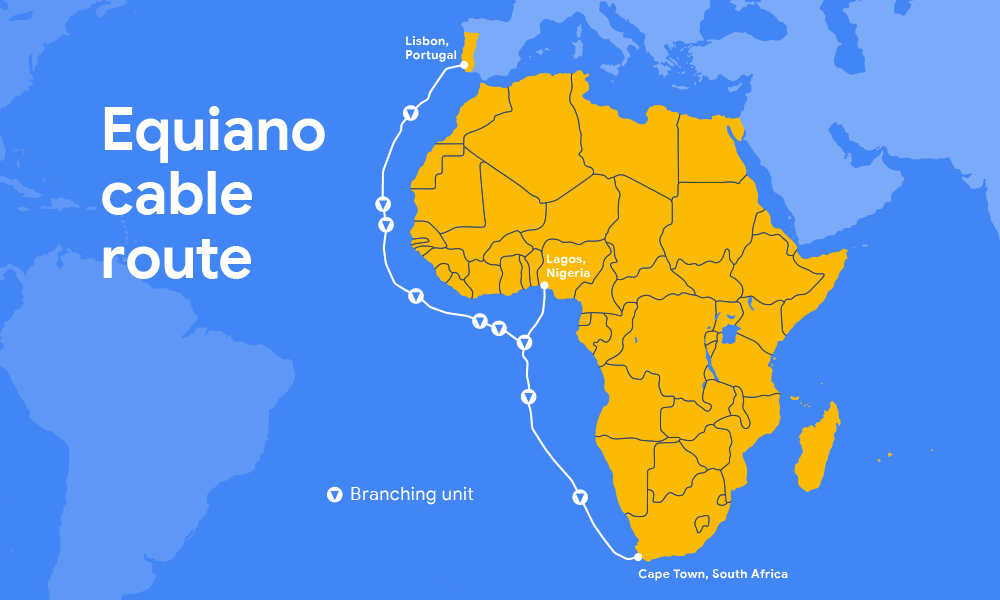 INFRA
INFRA
 INFRA
INFRA
 INFRA
INFRA
Google LLC said today it’s building another private subsea cable, this time linking Western Europe with the African continent.
The new subsea cable, called “Equiano,” and will run from Lisbon in Portugal all the way down the west coast of Africa to Cape Town in South Africa, with several “branching units” planned that will extend the company’s connectivity to other African countries such as Nigeria.
Google said it will be funding construction of the cable by itself, making it the company’s third such project following its earlier Dunant and Curie subsea cables, which connect the eastern U.S. coast with France, and the western U.S. with Chile, respectively.
Google’s strategy of building its own private subsea cables is a new and very expensive one, with its Durant and Curie projects said to have set it back more than a billion dollars. But there are considerable advantages to the strategy. Much of Google’s existing network capacity is purchased from existing cables, or comes from cables built by a consortium of partners, which means it has to share those connections.
By going it alone, Google can use the total bandwidth of the cables for its own purposes without sharing. It also gets additional benefits such as being able to customize them according to its specific technical requirements, allowing it better control over how traffic is routed.
Like Google’s earlier subsea cables, Equiano is named after an important historical luminary. Olaudah Equiano was a Nigerian-born writer and abolitionist who was enslaved as a child and taken to the British West Indies before being sold to U.S. slave traders.
But Equiano eventually obtained his freedom before moving to England, where he became a prominent member of the anti-slave trade movement there in the 1780s. His best-selling autobiography, “The Interesting Narrative of the Life of Olaudah Equiano,” is said to have aided the passage of the British Slave Trade Act of 1807, which abolished the African slave trade.
Google said the Equiano subsea cable will be built using something called “space-division multiplexing technology” that provides 20 times more network capacity than previous subsea cables built to serve Africa. The cable will also be the first in the world to make use of optical switching at the fiber-pair level, as opposed to the traditional method of wavelength-level switching. Apparently, this helps to simplify the allocation of cable capacity, meaning that additional bandwidth can be added to, or taken away from, different locations according to demand.
Google said its signed a contract with a company Alcatel Submarine Networks to build the Equiano cable. The first phase of the project connecting Lisbon to South Africa should be completed by 2021.
THANK YOU